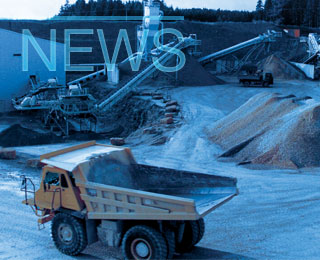This week Heidelberg Materials announced that its carbon capture and storage (CCS) project at the Slite plant in Sweden had entered the next phase, having completed its feasibility study. The front end engineering design (FEED) stage will now focus on a detailed design of the facility.
With full-scale operation scheduled for 2030, the timeframe of the project is tight. Moreover, Heidelberg Materials has not only set itself the challenge of reaching net zero with this project, but it also wants to achieve negative emissions. This would be an astonishing task to fulfil and, if it can be replicated, it would make the cement sector a truly carbon-negative industry in the future.
As unthinkable as this currently may appear, the Cementa Slite plant intends to increase its use of biofuels to capture up to 1.8Mta of CO2, or four per cent of the country’s total CO2 emissions. The process that will enable the plant to achieve this will capture 300,000t of biogenic CO2 to produce negative emissions.
Measuring biogenic CO2 capture
ENVEA, which supplies biogenic CO2 measuring equipment, claims that biogenic CO2 can reduce the cost of carbon allowances for cement plants and will help plants benefit from emissions trading systems. Biogenic CO2 is considered less damaging to the environment because the combustion of biomass releases only as much CO2 as was bound from the atmosphere during the growth of the biomass (plants, wood, sewage sludge or animal meal). The 14C fraction of emitted CO2 can be determined and provides a precise measurement of the proportion of biogenic CO2 in the flue gas of a plant. “Since biogenic CO2 is classified as climate-neutral, no allowances from the EU ETS or local emissions trading schemes would have to be purchased for this share of emitted CO2,” claims ENVEA.
CO2 capture analysts in Norway have assessed that European cement plant CO2 emissions contain on average between 5-15 per cent biogenic emissions. The Slite plant is looking to increase this amount substantially at its facility. A total of 5.4Mt of biogenic CO2 is currently believed to be emitted from 93 cement plants in Europe, based on data available to the Norwegian analysts. In the USA the total biogenic CO2 from 21 analysed plants was 0.8Mt.
The next phase
Meanwhile, the main focus of the FEED study is designing the best engineering solution to capture CO2 at Slite. This phase is planned to be completed at the end of 2025, with a final investment decision in 2026. Speaking in 2021, Per Brevik, director of alternative fuels at HeidelbergCement, said, “There are many potential technology providers in this area to be assessed. Most probably we will go for amine technology… Among available technologies, amine is the most mature and proven.”
EU funds available
There is an incentive for Heidelberg Materials to meet its 2030 deadline with funds becoming available at the national level. The European Commission approved a EUR3bn Swedish scheme to support CCS aimed at reducing biogenic CO2 in July 2024. Aid will be awarded through a bidding process, with the first auction expected this year. Participants must be implementing projects with a capacity to capture at least 50,000tpa of biogenic CO2. The approved projects will receive 15-year contracts and a grant per tonne of biogenic CO2 that is stored permanently.
